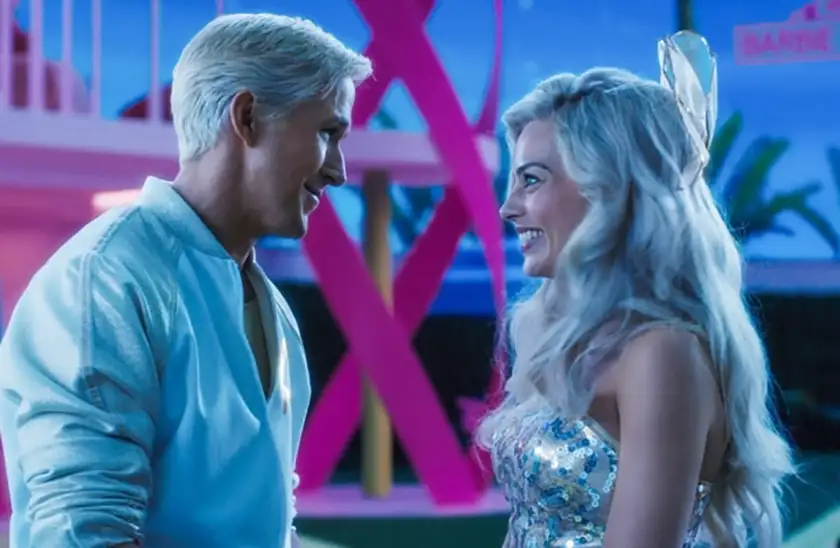Barbie finds an unconventional counterpart in Superstar: The Karen Carpenter Story, Todd Haynes’s early film about the late singer’s battle with anorexia.
When Greta Gerwig’s Oscar-nominated Barbie hit the big screen to dazzling effect last year, much was made of the fact that this was the iconic toy’s very first live-action motion picture. Yet while this may have been her Hollywood debut, the doll’s actual first foray into cinema came decades earlier, and far less auspiciously. In Todd Haynes’s experimental short film Superstar: The Karen Carpenter Story, we see the toy used to portray The Carpenters vocalist, whose tragic life plagued by anorexia nervosa makes for a darker, stranger take on the cultural resonance of the Barbie doll. Nonetheless, both Barbie and Superstar share an interest in the fundamental contradictions of modern womanhood and its place within the American cultural milieu.
Haynes released the biopic in 1987 while still a student at Brown University, finding modest success at festivals and swiftly accruing a cult following. It never made it to general release, however, after Richard Carpenter, Karen’s brother and bandmate, won a copyright infringement lawsuit due to the film’s unauthorised use of their music. Superstar still exists in bootleg form, though, and with the rise of YouTube and other such DIY streaming platforms, its fame has only grown as fans of Haynes’s rich filmography crave the deep cuts more and more.
Following her career from the late 1960s to the early ‘80s, the film depicts Carpenter’s struggle to adjust to fame, her relationship with her controlling parents, and the development of anorexia, which would contribute greatly to her death at just 32. Unconventionally, this is all intercut with footage of the Vietnam War, contemporary interviews about the Carpenters’ legacy, mockumentary educational segments, and the small aforementioned detail that the majority of the film’s action is depicted using Barbie dolls.
‘All you have to do is put yourself in my hands,’ a record label executive assures Carpenter in an early scene, ominously foreshadowing the oppressive triad of family, fame and illness that would define the young singer’s life. Carpenter is also put in the hands, literally, of Haynes, who whittles the plastic doll down to indicate her physical decay as time goes on. It’s a nightmarish vision oddly enhanced by the low-budget lighting and reduced quality of the bootleg versions available online, and the grimy, all-encompassing putrefaction feels a million miles from the glossy sheen of 2023’s Barbie.

Indeed, while discussing the making of her film, Gerwig shared that producers were ‘nervous’ due to Haynes’s controversial use of the toy to tell his story. Hers is a distinctively 2020s take on the doll, all bubblegum pink and proudly feminist, aimed as much at the children who play with Barbies as their millennial parents. The film sees the character brought to life by Margot Robbie, whose ‘Stereotypical Barbie’ seeks to work through an existential crisis by leaving Barbieland and learning what it is like to be a woman in the real world. Just as Carpenter must navigate the music industry and popular culture of 1970s America, Robbie’s protagonist finds herself confronted by the realities of an era that still places unrealistic expectations on women.
Together, the two films propose countless dichotomies, among them the visions of male and female filmmakers, conflicting waves of feminism, an unauthorised student film vs an officially licenced product, and the differing generic conventions of drama and comedy. But thematically, both are essentially about control, over our lives and over how we are perceived, and in whose hands this control lies.
When Carpenter’s parents aren’t managing her finances or insisting she remain in her childhood home at 25 years old, we see journalists and politicians using her as a weapon with which to wage the culture wars of the age. Against a backdrop of violence, sexual liberation and recreational drug use, the Carpenters represent ‘wholesomeness and easy-handed faith’, a new, reactionary symbol for the 1970s, embraced by Richard Nixon and American conservatives in response to the revolutionary progressivism of ‘60s pop and rock music.
In her position as an emblem of a particular strain of conservativism, we sense a discomfort in Carpenter akin to what Barbie experiences in the 2023 film. In a key scene, we see Gen-Z schoolchild Sasha (Arianna Greenblatt) accuse Barbie of being a ‘fascist’ for destroying young girls sense of self-worth. Barbie is devastated to discover that far from the beacon of female empowerment she thought she was, her image, as filtered through the perceptions of generations of women and men, has had effects on the world beyond her control.
What results from this iconifying process depicted in both Barbie and Superstar is a profound dehumanisation, one that stretches across not just the performance of gender but the internal world of sexuality, too. Here one of the central contradictions of the Barbie doll is writ large: for all her influence on the body image of young girls and women, she is an utterly sexless creature. She’s got the assets that contemporary western culture tells us make a woman attractive – she’s white, blonde, blue-eyed and thin – but, as a plastic children’s toy, she’s somewhat lacking in anatomical accuracy, presenting a neutered image of womanhood.

Some of the best gags in Barbie derive from this awkward inconsistency: ‘I thought I might stay over tonight,’ suggests Ryan Gosling’s Ken, who, when Barbie asks ‘To do what?’, responds, ‘I’m actually not sure.’ But Haynes uses this archetype of sterile beauty to much darker effect: despite the pressures on her to conform to beauty standards, his protagonist finds herself conversely desexualised, a figure of traditional Christian celibacy to be projected onto an America in supposed moral decline. Perhaps, forced to navigate a society that simultaneously fetishises and infantilises her, Carpenter’s anorexia affords her a misguided sense of control over her own body (and body image) that proves otherwise evasive.
Despite their stylistic differences, Superstar and Barbie are both concerned with the paradox of modern femininity. If Gerwig’s film is about a doll becoming a fully-fledged woman, Haynes’s is the inverse: a devastating portrait of a human being reduced to an object – poked, prodded, played with, and, as is the fate of so many beloved toys, ultimately broken. Just like the conflicted feelings of affection and resentment that the Barbie doll evokes in so many people, these two contrasting works can and should coexist. So if you thought ‘Barbenheimer’ was a tonally incongruous double bill, consider upping the ante with Superstar: The Karen Carpenter Story, and experience two very different visions of life lived as a Barbie doll.
Superstar: The Karen Carpenter Story is now available to watch on DVD and Barbie is out now on digital and on demand.

